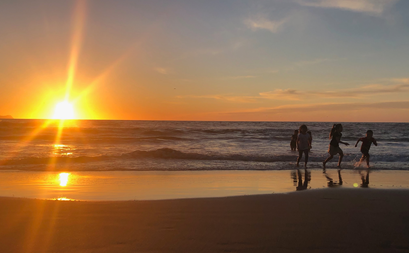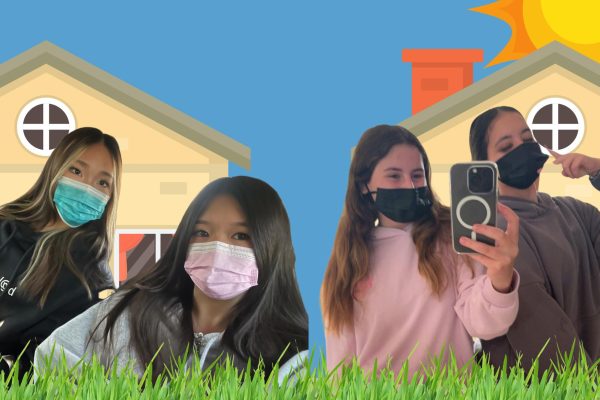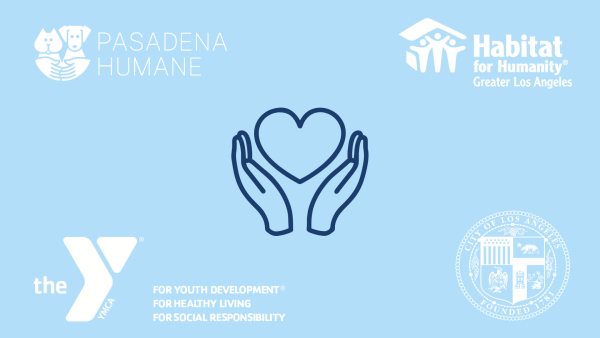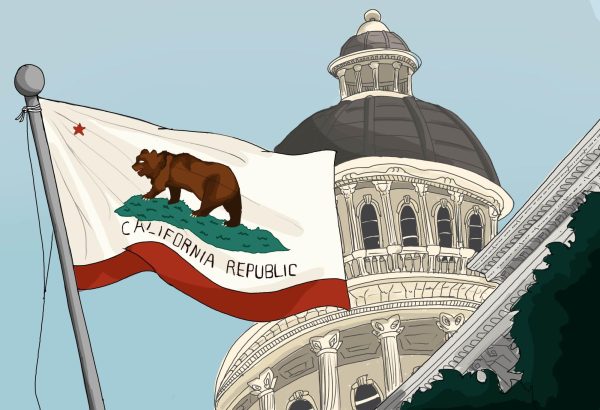Guest Contribution: Why You Should Visit Tijuana

Natalie C.
Back in February, Westridge students traveled to Tijuana, Mexico to learn about immigration and life at the border firsthand. This was the second year in a row that Westridge has offered this experience for students in Spanish IV and above or those currently enrolled in Jen Marcus’ Global Studies class. Natalie C. ’21 jumped at the chance to spend five days at the border, especially because she is currently studying immigration in her Global Initiative project. After returning, she wrote this special contribution for Spyglass, capturing what she learned and what the trip meant to her.
~ Staff writer Isabel A.
Tijuana, Mexico. They covered the corpse with a blanket.
It was a small one, barely large enough to shield his face, and coincidentally the same shades of blue and yellow as the sunset we had seen less than twenty-four hours ago. The swirling colors had been so beautifully splattered in the evening sky, and now they mockingly adorned the face of a dead man.
The man had collapsed while waiting for food in front of the desayunador we had been volunteering at, never to be revived. And while not alone, he died amongst strangers—without family and friends. Furthermore, once those strangers left, his only remaining company were the buzzing flies, littered garbage, and the stench of old alcohol that perpetually hung in the air. It was a chilling scene.
The worst part, I think, was that his body remained like that—alone—for several hours until the morgue workers arrived.
My classmates and I walked directly past the body on the way to our bus – at one point we were less than ten or fifteen feet away. I tried to recall his then covered face and commit his features to memory; wisps of graying facial hair, darkish skin, and glasses with light frames were all I could remember.
Once on the bus, some of my classmates cried, shaken with such a direct confrontation with death. However, I just stared; I stared at that sunset-colored blanket for as long as I could, perplexed. I could not grasp how something so horrible could remind me so vividly of something so breathtaking. How Tijuana could be so beautiful in one moment, yet so ugly in another.
Although I was only in Tijuana for four days, I found it to be a city of contradictions, a city that is as three-dimensional as its people, for behind every beautiful thing, person, or place in Tijuana, there is something lurking beneath the surface. There is anger, there is sadness, and there is a pervasive desire for a better life.
For every meek high school boy tentatively offering his girlfriend flowers on El Día de San Valentino, there is a deported veteran of the United States military fighting for his right to return to America. For every message painted on the wall declaring that “love has no borders,” there is a woman going to court for the ninth time to fight for visitation rights with her daughter in America. For every kid frolicking on the beach, there is a woman stationed at the wall hoping for a mere glance of the family she has been separated from—less than thirty feet apart, yet an impossible distance to cross.
I saw this tension between ugly and good everywhere, but especially when we spent the day with Karla and her son, Kenneth. The juxtaposition between joy and grief was so startling because these two people had such a plentitude of both.
Karla and Kenneth are from Guatemala but fled to Tijuana after Karla’s husband – Kenneth’s father—was murdered in front of her. Karla was originally forced to leave Kenneth and her other children behind. She dreamt of seeking refuge in America and later providing her children with a better life. However, when she came to the inevitable realization that such dreams were impossible, she brought Kenneth to Tijuana after he was threatened by a gang. She was still in the process of trying to bring her daughters over when we met her.
Before I met Karla and Kenneth, I had preconceived notions about them based on hearing a summary of their lives the night before. I expected them to be, frankly, broken. I could not fathom how anyone could go through even half of what they had gone through and come out intact.
However, like Tijuana itself, Karla and Kenneth were more complicated than that.
Yes, they obviously were struggling. I saw Karla’s eyes water while we listened to a sermon at the church ceremony we attended at the wall. I can vividly picture the moment when one of our guides asked her how her children in Guatemala were; her entire face dropped, she shut her eyes and could not say even a word in response. I remember Kenneth talking to me in one of the bedrooms at El Centro GaryMar. I knelt on the floor while he sat on one of the beds and looked down shyly at his lap. He told me how lucky I was to live in America and how he wanted to be my brother so he could come to America with me. In that moment, I had never seen a seven-year-old look older. I hope I never have to see a child look like that again.
That being said, it would be an injustice on my part to ignore the other sides of Karla and Kenneth.
Karla taught me and some of my classmates how to properly do the Punta dance while we were planting flowers at the border wall. She blasted “La Parranda” by Kazzabe on her phone, and we laughed and praised her for how well she could move her hips. I remember seeing Kenneth’s massive grin as he braided our hair, and we teased him about how he could become a hairstylist someday. We walked along the beach, listening to the live music and taking turns swinging Kenneth up and down. Karla juggled better than any of us, and Kenneth was extremely energetic, running towards the ball whenever it was in his vicinity. We played soccer in front of El Centro GaryMar, and the golden evening light somehow made everything feel softer.
In Tijuana, we laughed, we cried, and I got a glimpse of the people and places that make up the city. I’m not saying I’m an expert—I am so far from that—but what I know about Tijuana now is that it is not an easy place to describe. There are articles that claim it’s an up-and-coming city full of love or that it’s a city full of anger and desperation; I think it’s a little bit of both. The happiness, the solidarity, the sadness—it all blends together. The trip to Tijuana is easily the most important educational experience that Westridge offers. It’s something you just have to see for yourself.




























![Dr. Zanita Kelly, Director of Lower and Middle School, pictured above, and the rest of Westridge Administration were instrumental to providing Westridge faculty and staff the support they needed after the Eaton fire. "[Teachers] are part of the community," said Dr. Kelly. "Just like our families and students."](https://westridgespyglass.org/wp-content/uploads/2025/03/dr.-kellyyy-1-e1748143600809.png)


























Mar • Apr 22, 2020 at 5:20 pm
Thank you, Natalie, for writing this account of your experiences during your border trip. Your article eloquently describes the complexities of one of the most diverse cities in the world. It’s very helpful to me to read what former participants of our program have to say about their stay with us. There are always surprising elements in their writing that help me see my life and the lives of the people I interact with, from a fresh new perspective. This is one of the reasons I teach, my students never cease to amaze me with their insights on things that I would probably be oblivious to or would have failed to give them the importance they deserve.
Our efforts to help Karla bring her other daughter up to Tijuana got thwarted by the current health crisis but we are still in contact with her, even though we are currently not being allowed to go to Tijuana. We communicate often with her and with other families we know down there and send them financial support as needed, now that making a living in a place where so many people live day-by-day has become virtually impossible.
Again, thank you, we appreciate you, your beautiful soul, and the souls of all those who accompanied you on your trip to our city.
Be well. Be strong.